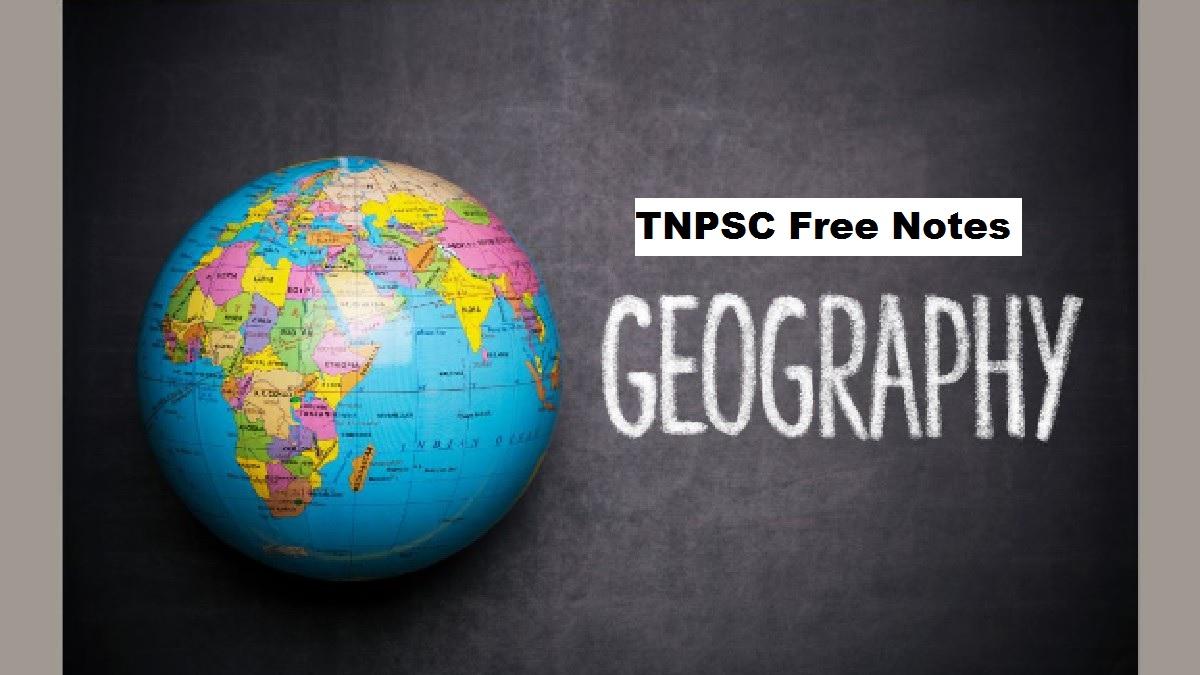இந்தக் கட்டுரையில், TNPSC குரூப் 1, குரூப் 2, குரூப் 2A, குரூப் 4 மாநிலப் போட்டித் தேர்வுகளான TNUSRB, TRB, TET, TNEB போன்றவற்றுக்கான முறைகள் இலவசக் குறிப்புகளைப் பெறுவீர்கள்.தேர்வுக்கு தயாராவோர் இங்குள்ள பாடக்குறிப்புகளை படித்து பயன்பெற வாழ்த்துகிறோம்.
Drainage and Climate of India
A drainage system
The total area drained by a river and its tributaries is known as a drainage basin.
The drainage system of India is broadly divided into two major groups on the basis of
their location.
They are
1. Himalayan rivers and
2. The Peninsular rivers
Himalayan Rivers
Indus
Ganga
Brahmaputra
Himalayan Rivers
These rivers are found in north India and originate from Himalayas. So, they are also called as
Himalayan Rivers. These are perennial rivers
The Indus River
It originates from the northern slope of the Kailash range in Tibet near Manasarovar
Lake at an elevation of about 5,150 m.
Its length is about 2,880 km (Only 709 km is in India).
The river runs through Jammu and Kashmir, turns south near Chillar and enters
Pakistan.
Tributaries – Jhelum, Chenab (Largest tributary of Indus), Ravi, Beas and Sutlej.
It enters the Arabian Sea.
The Ganga River
The Ganga River system is the largest drainage system of India.
The river Ganga originates as Bhagirathi from the Gangotri Glacier in Uttar Khasi District
of Uttarkhand state, at an elevation of 7,010 m.
Its length is about 2,525 km.
Tributaries – From north are Gomti, Gandak, Kosi and Ghaghra and from south are
Yamuna (largest tributary of Ganga), Son, Chambal etc.
The river Ganga is known as the River Padma in Bangladesh.
The combined river of Ganga and Brahmaputra creates the World’s largest delta known
as Sundarbans in Bangladesh before joining the Bay of Bengal.
The Brahmaputra River
The river Brahmaputra originates from the Chemayungdung Glacier of the Kailash range
to the east of Lake Manasarovar in Tibet at an elevation of about 5,150 m.
This river is known as Tsangpo (Purifier) in Tibet.
The length of this river is about 2,900 km (900 km in India).
It enters into India through a gorge in Arunachal Pradesh namely Dihang.
Tributaries – Tista, Manas, Barak and Subansiri
This river is called as Jamuna in Bangladesh. After it joins with the river Ganga in
Bangladesh, the river is called as Meghna.
Characteristics of Himalayan Rivers
1. Long and wide
2. Perennial in nature
3. Unsuitable for hydro power generation
4. Middle and lower courses are navigable
Peninsular Rivers
The rivers in south India are called the Peninsular rivers.
These are seasonal rivers (non–perennial).
The peninsular rivers are divided into
East flowing rivers
West flowing rivers
East Flowing Rivers
Mahanadi
The river Mahanadi originates near Sihawa in Raipur district of Chattisgarh and flows
through Odisha.
Its length is 851 km.
Tributaries – Seonath, Telen, Sandur and Chitartala, Genguti and Nun
The Mahanadi empties its water in Bay of Bengal.
Godavari
Godavari is the longest peninsular rivers.
Its length is 1,465 km.
It is also called Vridha Ganga.
It originates in Nasik district of Maharashtra, a portion of Western Ghats.
It flows through the states of Telangana and Andhra Pradesh before joining Bay of
Bengal.
Tributaries – Purna, Penganga, Pranitha, Indravati, Tal and Salami.
The river near Rajahmundry gets divided into two Channels called Vasistha and Gautami
and forms one of the largest deltas in India.
Kolleru, a fresh water lake is located in the deltaic region of the Godavari.
Krishna
The river Krishna originates from a spring at a place called Mahabaleshwar in the
Western Ghats of Maharashtra.
Its length is 1,400 km.
Tributaries: Bhima, Peddavagu, Musi, Koyna and Thungabhadra
It also flows through Andhra Pradesh and joins in Bay of Bengal, at Hamasaladeevi.
Kaveri
The river Kaveri originates at Talakaveri, Kudagu hills of Karnataka.
Its length is 800 km.
The river kaveri is called Dhakshin Ganga or Ganga of south.
While entering Tamil Nadu, the Kaveri continues through a series of twisted wild gorges
until it reaches Hogenakkal Falls and flows through a straight, narrow gorge near Salem.
The Kaveri breaks at Srirangam Island with two channels, river Coleroon and Kaveri. At
last, it empties into the Bay of Bengal at Poompuhar.
West Flowing Rivers
Narmada
This river rises in Amarkantak Plateau in Madhya Pradesh at an elevation of about 1057
m and flows for about 1,312 km.
It covers an area of 98,796 sq km and forms 27 km long estuary before outfalling into
the Arabian Sea through the Gulf of Cambay.
It is the largest among the west flowing rivers of Peninsular India.
Tributaries – Burhner, Halon, Heran, Banjar, Dudhi, Shakkar, Tawa, Barna and Kolar.
Tapti
Its length is 724 km. It covers an area of 65,145 sq km.
Tapti River rises near Multai in the Betul district of Madhya Pradesh at an elevation of
about 752 m.
Tributaries – Vaki, Gomai, Arunavati, Aner, Nesu, Buray, Panjhra and Bori.
It outfalls into the Arabian Sea through the Gulf of Cambay.
The Mahisagar
It rises in Madhya Pradesh and, after flowing through the Vagad region of Rajasthan,
enters Gujarat and flows into the Arabian Sea.
This river crosses the Tropic of Cancer twice.
Characteristics of South Indian Rivers
Originate from Western Ghats
Short and narrow
Non perennial in nature
Suitable for hydro power generation
Not useful for navigation
**************************************************************************
| Adda247 TamilNadu Home page | Click here |
| Official Website=Adda247 | Click here |








